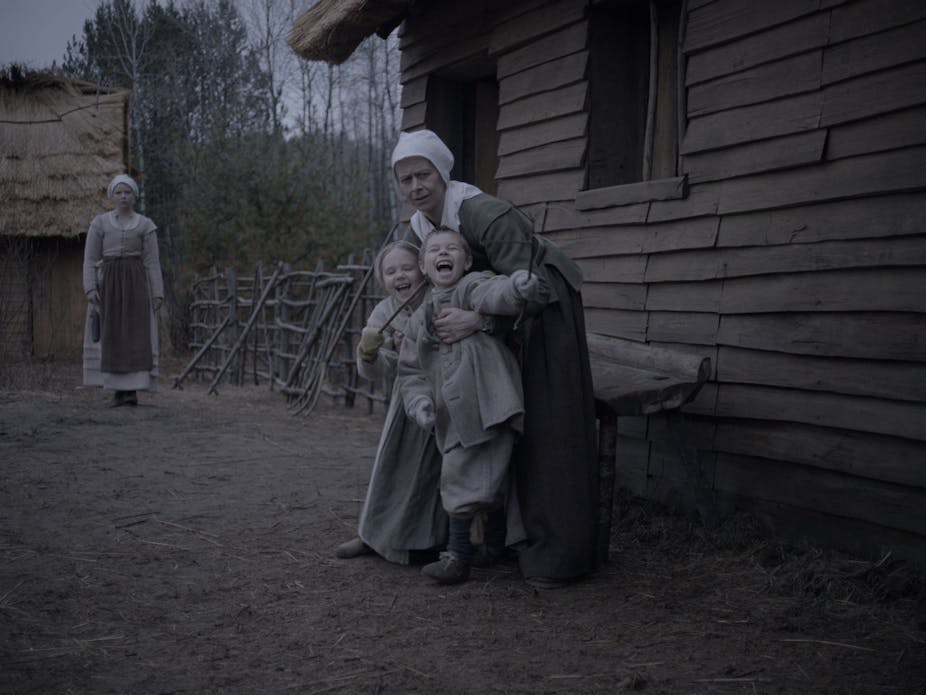There haven’t been many films about witches in recent years. Stories explicitly scapegoating women as “mad” and “hysterical” seem to have fallen out of favour in popular culture, even if this tendency continues to clandestinely underscore much public discourse and debate.
Rob Zombie’s The Lords of Salem (2012) was an exception, as is Robert Eggers’ recent theatrical release The Witch: A New England Folktale (2015), a far more coherent film than Zombie’s, which was a typically confusing homage to films past buoyed by a schlock ‘n’ roll aesthetic.
The Witch’s deceptively simple plot follows the story of a 17th century New England family who, in the opening scene of the film, go into exile from the local community on religious grounds, only to be terrorised by a witch - or several witches – who inhabit the woods beyond the edge of their farm.
Horror narratives always concern the transgression or eradication of boundaries between inside and outside – inside the body, outside the body, inside the community, outside the community – and have thus sometimes been seen by film critics as unforgivably conservative.
A monster comes from outside (or within) the good American town and violently disrupts it, before order and peace are restored through its excision. This formula reached its pinnacle in the depiction of the “insane” killer in 1980s slasher films, the “loony” who could be killed with impunity.
But the good horror films – A Nightmare on Elm Street (1984), The Hills Have Eyes (1977), Halloween III: Season of the Witch (1982) – have always sustained a far more complex, interrogative relationship with these boundaries and their a priori social constructions.
The Witch, I would argue, fits into this category.
It brilliantly literalises the conceit of the tense, fraught relationship between inside and outside, firstly through the family’s self-exile from the community, and then through the continually confused relationship between the interior of the domicile and the exterior of the land of the farm - which seems to be presided over by an evil black goat (!) - and then between the interior of the farm itself and the exterior of the woods beyond.

These contours of horror are mapped, at the same time, onto the psychologies of the two main characters – patriarch William (Ralph Ineson) and his daughter Thomasin (Anya Taylor-Joy), through whose point of view much of the story is told.
Where does his consciousness begin and end? What is outside, what is inside his mind? What is in her mind, and where does the boundary between her dreams and day to day life begin and end, given she is depicted in almost Bildungsroman-_esque _fashion as heroine on the verge of puberty, a great subject for witchiness?
This mapping of outside onto inside, and vice versa, gridded against considerations of the supernatural and the divine, is masterfully handled, even if it is all admittedly slightly hokey. The film is so aesthetically well-constructed that it doesn’t really matter.
In the context of the film’s self-declaration that it is “A New England Folktale,” the return to a narrative of witches threatening the colonisers of the New World is slightly easier to stomach than if one were to seriously consider the historical implications of the figure of the witch, as mad scapegoat solidifying the continuity of the community, as the exception to the social law that becomes, through punishment, the corporeal reification of this law. As recently deceased French thinker René Girard might have put it, the witch was the social scapegoat that revealed the violence endemic in the nature of the social itself.
The politically dubious origins of the New England tales upon which the film is supposedly based further comes into focus when Katherine (Kate Dickie) worries that her son, who appears to be possessed, has perhaps been beset by “Indian magic.”
This is a grim reminder of the context of such tales that present the wilderness (like the witch) as a haunted place to be controlled and tamed. Charles Brockden Brown’s novel Edgar Huntly (1799), for example, could be read as justifying, on the grounds of the “black magic” of the Indians, their dispossession and massacre - even if such a reading unforgivably reduces what is in fact a far more nuanced literary work.
Religion, needless to say, plays a very significant role in The Witch – and it is more than just a question of the relationships between “good”-“evil” and “natural”-“supernatural” that underscore countless horror films.
The whole story is premised on William’s religious and individualistic hubris – his pride in exile from the community, his belief that religion has value outside of its social function, outside of its ontological origin as underpinning community through communitas.
The film becomes, in this context, a kind of introspective study of the pharmacological effects of religion – as both poison and cure – unfolding contiguous to the tale of the beast within and without.
The Witch is the best witch film since Dario Argento’s Suspiria (1977), though the two films couldn’t be more different, with the Instagramatic style of The Witch radically different from Argento’s signature baroque garishness.
The Witch is, in any case, certainly scarier than two of the other major witch films that appeared in between, Nicolas Roeg’s The Witches (1990) and the perennial favourite of Halloween television, Hocus Pocus (1993).
It is, furthermore, the most engaging occult film since Kill List (2011), sustained by its introspection regarding its subject, and some intense, arresting images, along with its appealingly low-key tone.
It would be worth seeing for the terrifying images of the woods alone.
Woods, of course, aren’t naturally terrifying – but we’ve grown up consuming so many iterations of the Hansel and Gretel and Little Red Riding Hood myths, that The Witch’s myriad images of deserted, twilit woods should conjure up fear even in the most stout-hearted amongst us.
As should The Witch at large, a nice piece of Canadian cinema!

